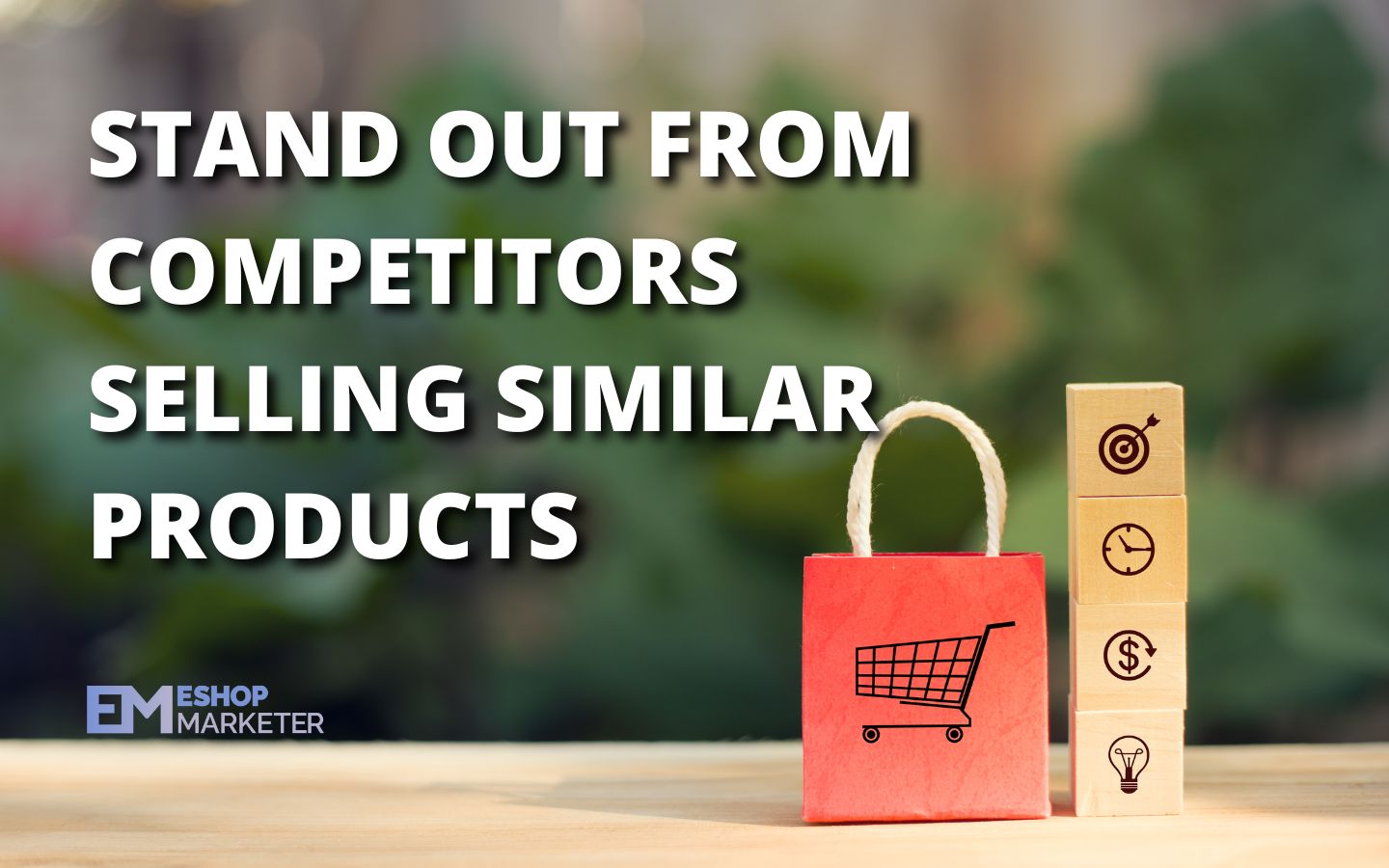There are millions of active Etsy sellers; chances are, you’ll be competing with shops selling similar products. To earn more on Etsy, you need to stand out.
Even if you’re competing for buyers’ attention, you may improve your listings and attract more customers without altering your inventory or your whole approach. If you want to stand out, you must do everything correctly, and these suggestions will address frequent blunders that may elevate your listings from excellent to fantastic and your sales from good to excellent.
Research Competitors and Avoid Their Mistakes
Spend some time browsing Etsy as if you were a customer. Look into the niches you intend to dominate and your rivals.
Take note of the following:
- What do I like about the things I’m drawn to or the best-sellers in my niche?
- What does this seller do well in their photographs and descriptions that I am not?
- What do other people think about the seller’s shop/service/items?
- What keeps me from buying from a seller I don’t like?
- What about this seller’s photographs and descriptions irritates me, and am I doing any of those things myself?
- What do other people think about the seller’s shop/service/items?
Please don’t copy what other shops are doing, but be aware of what is working and alter your own contents appropriately; nobody has a monopoly on knowing what is working in their niche. Assess what your rivals are doing every six months; trends and popularity may change quickly.
Use High-Quality Photos

In any competitive marketplace, such as Etsy, your items will not attract visitors to click without professional-quality images.
No matter how great your camera is, lighting is essential for taking amazing photos.
Don’t be scared to edit your images after taking them. Even if you cannot purchase expensive picture software, excellent free alternatives are available online or as applications. While you never want to mislead your products, making sure your colors are true to life or cropping images for a better perspective of the object might help.
Optimize Your Listing Titles for SEO
Etsy is essentially a search engine. Because your titles are one of the primary ways, it determines how to index things, having your title correct can help your items show sooner in a search — that is, ensure your titles adhere to search engine optimization (SEO) best practices. Here are the basics to optimizing your product titles:
- Use descriptive language. Include materials used, names, size, or other identifying qualities of your goods that will be displayed when someone searches for what you’re offering.
- Use several terms for the same item.
Remember that your item’s title isn’t the only thing that draws shoppers in. The major purpose of the title should be to get your items to appear in a search. Great photographs, product descriptions, and other aspects will entice visitors to buy.
Show Off Your Products

Yes, professional-looking images are vital, but placing everything on a plain backdrop isn’t the only way to go, and it’s certainly not the greatest way to stand out.
Show off your worn items, such as shoes, purses, jewelry, belts, and other accessories. If your object serves a specific purpose, show it in use rather than merely in a “studio” environment. Show a portable campfire or tent in use, for example, or a snapshot of someone walking their dog with the leash you’re selling.
The idea with product images is not only to convey precisely what your things appear like but also to appeal to the shopper’s imagination: Can they see themselves with your items? Are they drawn in by the lifestyle you’re trying to sell? They ought to be!
Choose a Descriptive Shop Name
Even minor details may make a difference in a busy marketplace like Etsy. Your username should be distinctive as well as descriptive.
Using a username that emphasizes your professionalism communicates to users that you are a serious seller who can complete their orders.
This is also a place where you may sell your products and services.
If possible, strive to make your login and shop name memorable so that buyers will remember them. Customers who remember your name are more likely to return to your store or promote your products on the spur of the moment. Getting additional business from existing clients is also a wonderful method to boost revenue.
Make Your Product Descriptions Informative
Your product descriptions are a significant sales pitch for customers. People reading your product descriptions have discovered your items, clicked on them, and are seeking information to help them decide whether to purchase or not. You’re halfway to a sale, and what you say about your product has the potential to make or break the deal.
Shoppers want specifics at this point in their trip, so provide them all they need to know to make an informed decision. Customers will know what they’re getting when they shop from your web store if you include dimensions, delivery timeframes, size information, material information, and any other specifics about your goods.
Make your things sound as good as possible, in addition to the facts and figures: Is your pottery hand-thrown? One-of-a-kind designs? Whatever makes your offerings unique should be highlighted prominently. Consider posting a customer remark about how fantastic your products are as social proof to emphasize the value you provide to customers.
Tell Your Story in Your Shop About Section

What happens when a shopper navigates from your product page to your shop page? It should be a carefully managed area that tells a story about who you are and why your company is superior to rivals, and one of the finest places to do it is in your profile.
Shoppers who read your profile seek additional information about you and want to know if your company is reliable. In other words, your profile is a marketing tool. Be deliberate in representing yourself, your company’s history, and your goal statement.
Tell Shoppers What Makes You Better
Because eCommerce markets like Etsy are busy, you must identify and communicate what distinguishes you from other vendors. Are you concerned about providing fantastic customer service, detailed customization, or expediting orders? Do you utilize organic ingredients, source locally, or produce in an environmentally responsible manner? Make whatever aspect of your company you are most proud of visible.
Don’t hesitate to include these in your descriptions, even if they’re unrelated to the item. Shoppers use the information on your product pages to generate opinions not just about the item in issue but also about you as a vendor. Make them go on a quest to discover what your company excels at – most people will not bother to search.
Expand You Inventory on A Regular Basis

Constantly expanding your inventory can help you in these areas:
The more products you sell, the more likely customers will find your business. Adding goods regularly provides Etsy with more of your items to display to customers.
You may discover a new niche that takes off for you as you continue to be creative and think about your offers. If you keep the same ten things on display and never venture outside your comfort zone, you may miss out on the next great thing. Expanding your options, especially if sales have stalled, will push you and improve sales.
People will want to return to your shop to check what new items you’ve introduced. Selling to existing clients may help you increase your profitability and get new consumers. Customers that appreciate your work will be motivated to keep up with what you’re doing if your shop is dynamic, with new goods or versions of products arriving regularly. And the more people visit your site, the more likely they will spend money.
Want to be an Etsy Star Seller? Check this blog post out!
Visit howtosellonetsy.com for more Etsy selling tips!


